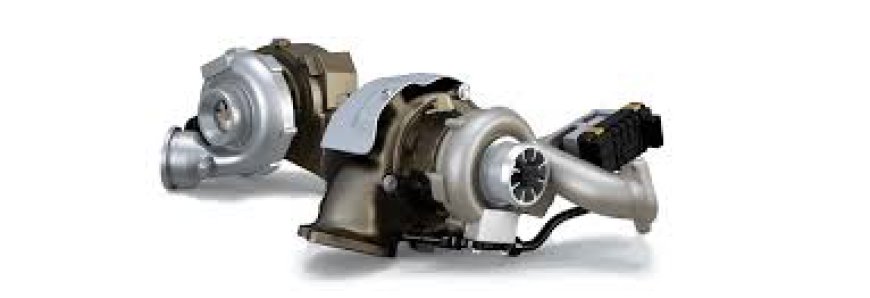The Benefits of Turbo Refurbishment for Your Vehicle

Advancements in technology have made turbochargers a popular feature in modern cars. It offers marvellous power and fuel efficiency and as technology progress, their importance will continue to increase in helping cars receive further prized enhancements while having more environmentally friendly features. However, as these components age they can deteriorate or get damaged. In such instances turbo repair provides an effective and economical option.
An article will be presented here which describe the pros of Turbo refurbishment the process and why there might be a potential of it being a better alternative than replacing your turbocharger.
What is Turbo Refurbishment?
Turbo refurbishment is a repair and restoration of a previously working or broken down used turbocharger to original like-new condition by taking the turbo apart, cleaning it, replacing any broken parts, and then reassembling it.
Alongside this, perhaps the biggest advantage of the turbo refurbishment industry is it allows you to keep your component in action, extending the car’s life by making use of a turbo. Buying refurbished turbos can be a much more cost-effective method than replacing an original factory part with a new one - a well-executed refurbished turbo can perform just as well as its brand new alternative, but at a fraction of the cost.
Key Benefits of Turbo Refurbishment
When your turbocharger starts to fail, here are a few reasons why it might be a good idea to select a turbo refurbishment over a replacement:
1. Cost Savings
One of the major advantages with turbo refurbishment is the cost saving that it brings. Turbos are complicated components and a new turbo can be expensive, especially for high performance vehicles. Refurbishment is far more affordable and you can restore the performance of your vehicle without spending a fortune in the process.
2. Environmental Impact
The main benefit of turbo refurbishment is that it helps divert waste by repurposing the existing turbo housing and other components that are still in good condition. Insisting on replacement for the entire turbo requires the production and later disposal of new parts, which creates unnecessary environmental burden, thus rendering refurbishment a more environmentally sound choice.
3. Maintaining Original Performance
Your properly rebuilt turbo will perform as well as new. When done by trained experts, the turbo is assembled to ‘as new’ specifications and your vehicle is restored to its original power, fuel economy and performance levels.
4. Faster Turnaround
Replacing a turbo with a fresh part generally requires more time, especially if the replacement part needs to be obtained, whether special ordering, or simply not being in stock. By comparison, turbo refurbishment is often quicker, with the majority of refurbishing companies providing same-day or next-day turnaround for refurbished turbos, getting you back up and rolling sooner.
5. Custom Solutions
In certain instances, turbo refurbishment will enable your turbocharger to be modified, thus enhancing or upgrading the performance after reconditioning. There are certain upgrades that are available, such as improving the durability, efficiency or power output of the turbo.
Signs That Your Turbo Needs Refurbishment
There are certain signs that your turbo is on its way out. If you catch them early-on, you can save your vehicle lots of expensive repairs. Some of the common symptoms that your Turbo might need refurbished are:
Loss of pep: Has the car lost a significant amount of its power, acceleration or ability to maintain speed? Any of these could be signs of a bad turbo.
Violent Exhaust Smoke: white, blue or black smoke from your exhaust could be a sign of turbo problems, especially if oil has leaked into the system.
Unusual Noises: Whistling, grinding, hissing noises might be an issue with the turbocharger.
More engine oil consumption: an excessive consumption of engine oil will result from a turbo damage which causes the oil to escape into the engine.
The Turbo Refurbishment Process
The description of turbo refurbishment given below provides instructions on how to restore a turbo to its original potential performance. Details of the process are explained as follows:
Inspect: Check the turbocharger closely for how bad the damage is, for instance checking the state of the bearings, the compressor wheel, the turbine and the seals. Inspection.
1. Disassembly: The turbo is completely taken apart. Each part is inspected, checking for wear or damage. Turbine blades, compressor wheels, etc. 2. Reassembly: The finished product is reassembled.
Cleaning: (1) The innermost parts are cleaned of carbon deposit, oil and other junk.
Replacement of Worn Parts: All worn or damaged mechanical parts are serviced with new, high-quality parts, including seals, bearings, and even the turbine wheel.
Reassembly and another spin: Once the new parts are in, the turbo goes back together, and is then spun up to bring it back to factory balance.
Testing: The rebuild turbo is tested to check that performance parameters are correct and the turbo is working.
Conclusion
From cost, to saving a millon or so pounds of waste from recycling to thousands of litres of fuel processed through its lifetime, there are numerous benefits to Turbo refurbishment. As such, when elements of the turbo begin to fail, rebuild offers a sensible solution to ensure your vehicle drives as well as it should, but at a significantly reduced cost to new. When Turbo rebuilt you can achieve near the same performance of a new unit, driving like new but without stretching the wallet.

 sinspeed_21
sinspeed_21